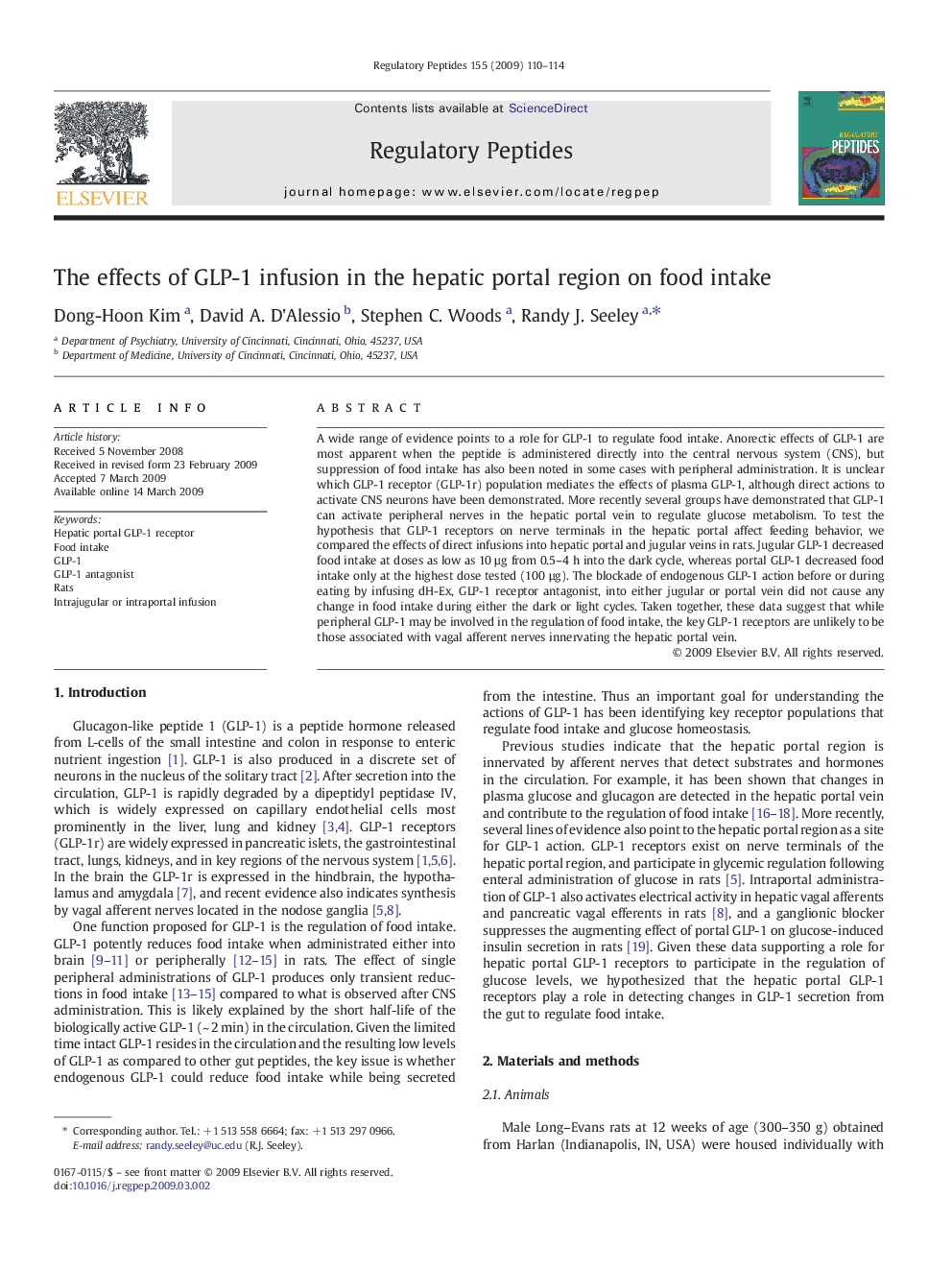| Article ID | Journal | Published Year | Pages | File Type |
|---|---|---|---|---|
| 2023098 | Regulatory Peptides | 2009 | 5 Pages |
Abstract
A wide range of evidence points to a role for GLP-1 to regulate food intake. Anorectic effects of GLP-1 are most apparent when the peptide is administered directly into the central nervous system (CNS), but suppression of food intake has also been noted in some cases with peripheral administration. It is unclear which GLP-1 receptor (GLP-1r) population mediates the effects of plasma GLP-1, although direct actions to activate CNS neurons have been demonstrated. More recently several groups have demonstrated that GLP-1 can activate peripheral nerves in the hepatic portal vein to regulate glucose metabolism. To test the hypothesis that GLP-1 receptors on nerve terminals in the hepatic portal affect feeding behavior, we compared the effects of direct infusions into hepatic portal and jugular veins in rats. Jugular GLP-1 decreased food intake at doses as low as 10 µg from 0.5-4 h into the dark cycle, whereas portal GLP-1 decreased food intake only at the highest dose tested (100 µg). The blockade of endogenous GLP-1 action before or during eating by infusing dH-Ex, GLP-1 receptor antagonist, into either jugular or portal vein did not cause any change in food intake during either the dark or light cycles. Taken together, these data suggest that while peripheral GLP-1 may be involved in the regulation of food intake, the key GLP-1 receptors are unlikely to be those associated with vagal afferent nerves innervating the hepatic portal vein.
Keywords
Related Topics
Life Sciences
Biochemistry, Genetics and Molecular Biology
Biochemistry
Authors
Dong-Hoon Kim, David A. D'Alessio, Stephen C. Woods, Randy J. Seeley,
